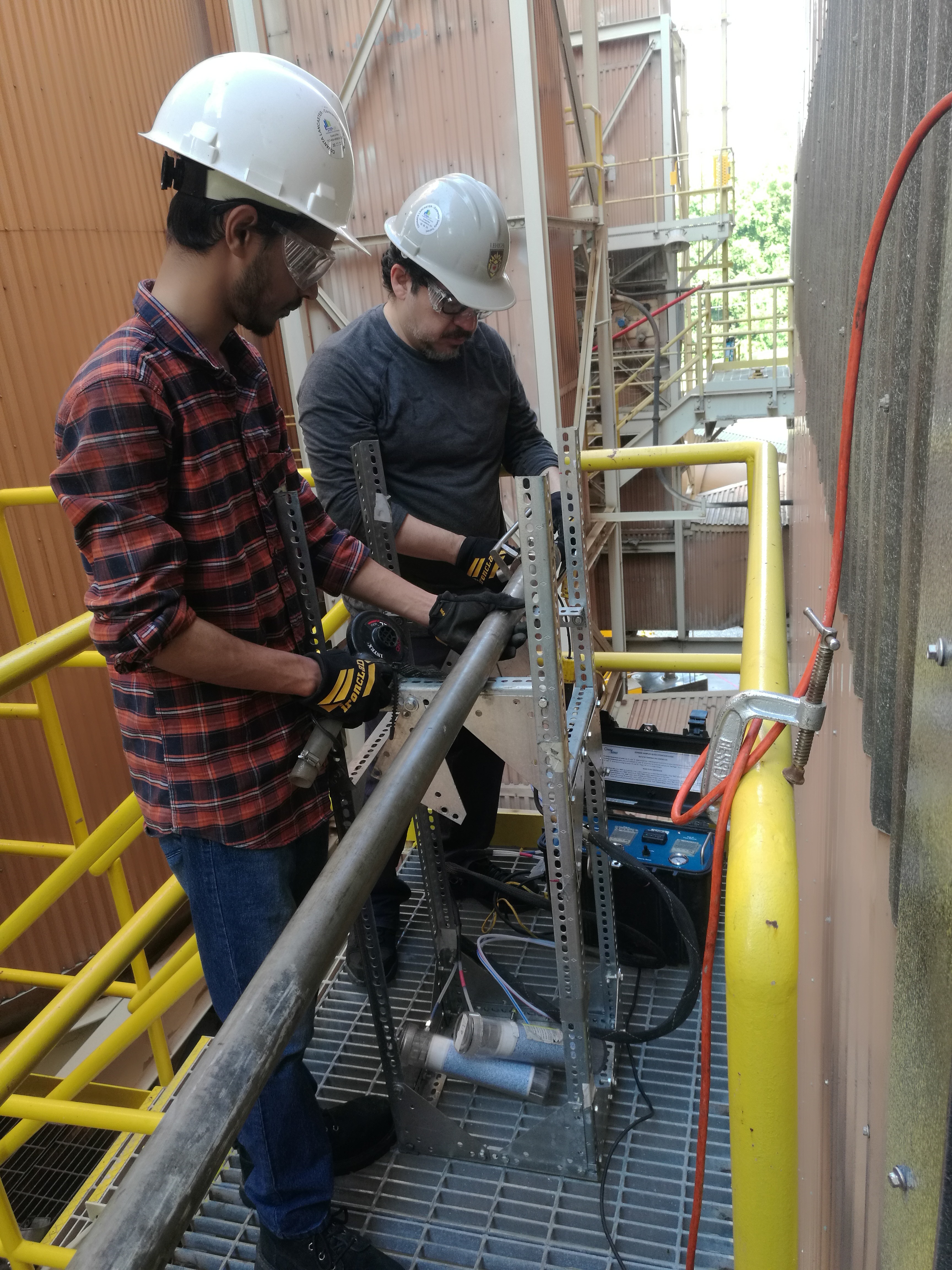A team of Lehigh graduate students (Guanrong Song, Julio Bravo, Lida Yan and Tanumoy Banerjee), led by Research Scientist Zheng Yao, has been working on the development, and laboratory and field tests of alternative sorbent for adsorption of mercury in flue gases. Anthropogenic mercury emissions from coal-fired power plants, cement kilns, industrial boilers, waste incinerators and steel mills are a serious environmental concern due to the toxicity and persistence of mercury which creates air pollution and accumulates in waterways. The Energy Research Center (ERC) and Blaschak Coal Corp. have worked on developing a high mercury-capturing capacity sorbent that is prepared from anthracite via a multi-stage activation process. Blaschak is interested in finding non-energy uses of anthracite and the team has identified an optimal source of the material from Blaschak’s manufacture process. Laboratory mercury adsorption experiments, using the synthesized activated carbon, have resulted in competitive adsorption capacities, both with and without halogenation. A multi-week slipstream test campaign was carried out at Covanta’s Lancaster waste-to-energy facility, where the anthracite-based, and multiple commercial sorbents were tested under real flue gas conditions, achieving excellent results.

